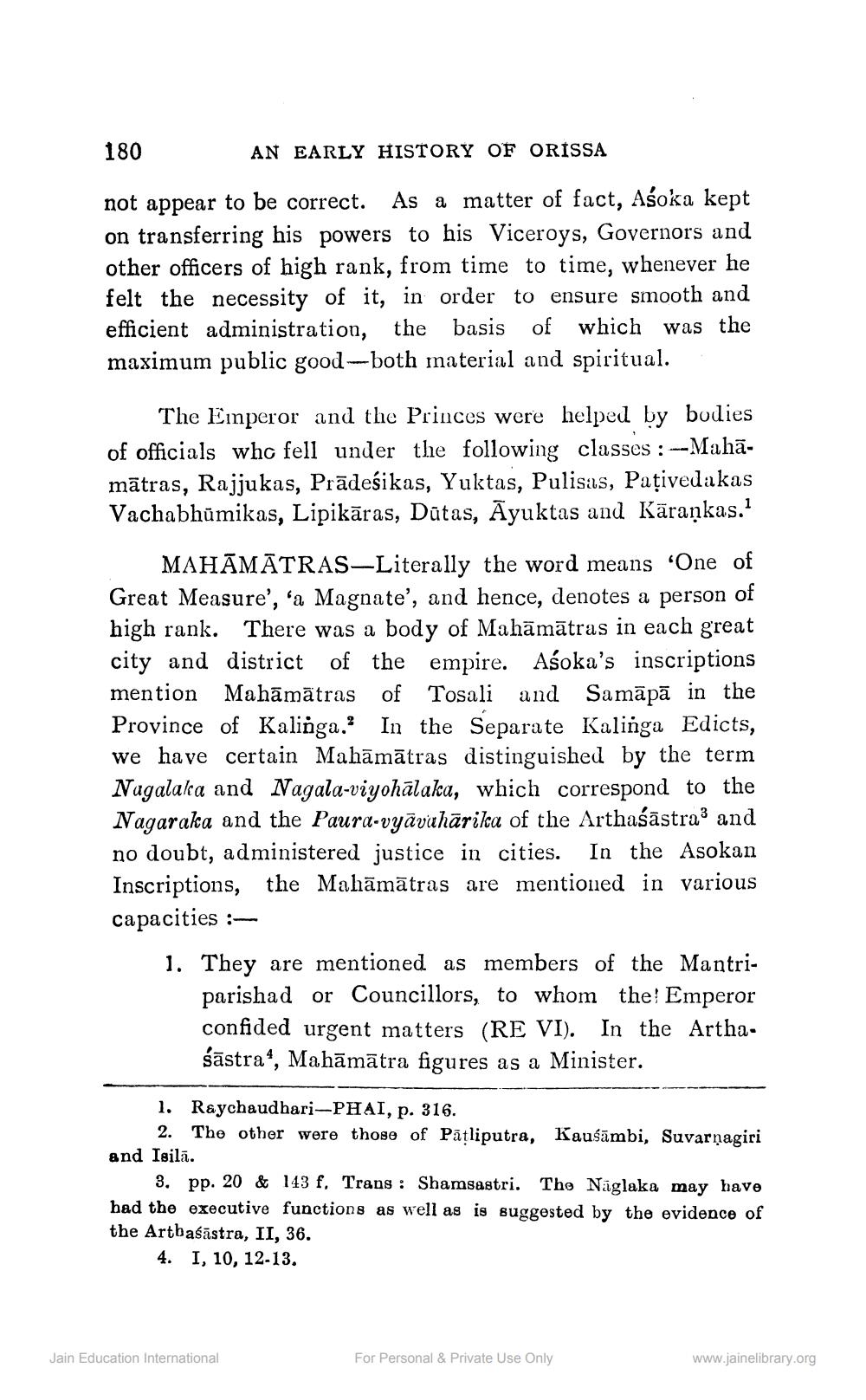________________
180
AN EARLY HISTORY OF ORISSA
not appear to be correct. As a matter of fact, Aśoka kept on transferring his powers to his Viceroys, Governors and other officers of high rank, from time to time, whenever he felt the necessity of it, in order to ensure smooth and efficient administration, the basis of which was the maximum public good-both material and spiritual.
The Emperor and the Princes were helped by bodies of officials who fell under the following classes : ---Mahāmātras, Rajjukas, Prādesikas, Yuktas, Pulisas, Pațivedakas Vachabhūmikas, Lipikāras, Dūtas, Āyuktas and Kārankas.?
MAHĀMĀTRAS–Literally the word means 'One of Great Measure', 'a Magnate', and hence, denotes a person of high rank. There was a body of Mahāmātras in each great city and district of the empire. Asoka's inscriptions mention Mahāmātras of Tosali and Samāpā in the Province of Kalinga.? In the Separate Kalinga Edicts, we have certain Mahāmātras distinguished by the term Nagalala and Nagala-viyohālaka, which correspond to the Nagaraka and the Paura-vyāvahārika of the Arthaśāstraand no doubt, administered justice in cities. In the Asokan Inscriptions, the Mahāmātras are mentioned in various capacities :
1. They are mentioned as members of the Mantri
parishad or Councillors, to whom the! Emperor confided urgent matters (RE VI). In the Arthaśāstra“, Mahāmātra figures as a Minister.
1. Raychaudhari-PHAI, p. 316.
2. The other were those of Patliputra, Kaušāmbi, Suvarnagiri and Isilā.
3. pp. 20 & 143 f, Trans : Shamsastri. The Naglaka may have had the executive functions as well as is suggested by the evidence of the Artbaśāstra, II, 36.
4. I, 10, 12-13.
Jain Education International
For Personal & Private Use Only
www.jainelibrary.org




